12 coastal views from Tobago
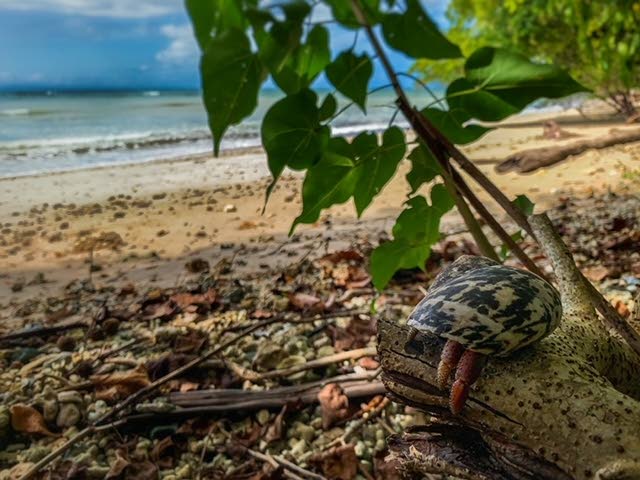
The traditional 12 days of Christmas run from December 25 to January 6. Instead of dancing lords and ladies, and the partridge, or cornbird in the coconut tree, Joanne Husain brings you 12 views around Tobago.
For many of us, transitioning the threshold from the old year into the new year is marked with celebration and reflection. The coast is also a threshold; one we can engage every day of the year. Terrestrial and marine life converge in this liminal space where change is the only constant. As 2022 ebbs, let us appreciate and consider our coastlines as we prepare to flow into 2023, cleansed and revitalised.

Kilgwyn Beach
The pink morning glory (Ipomoea pes-caprae) fringes the upper sandy shores of Kilgwyn Beach in the Crown Point area. These creeping vines act as a primary sand stabiliser. Behind the ostentatious blooms is the last remaining stronghold of Kilgwyn Swamp. Habitats like this play a crucial role in climate change mitigation and adaptation, especially in small island developing states like ours.
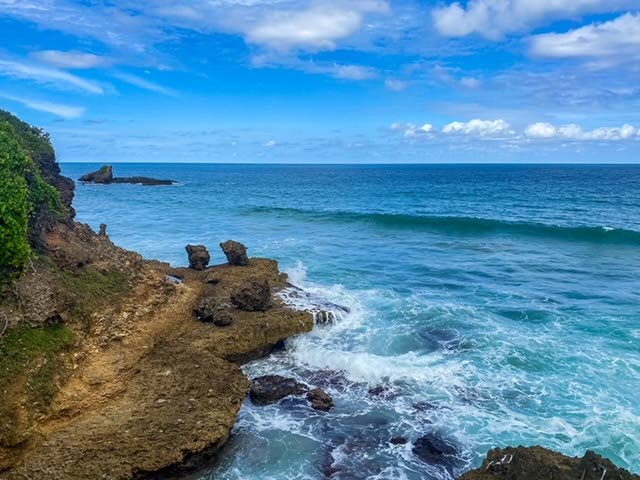
Buccoo/Mt Irvine
Along the northern edge of the promontory separating Buccoo from Mt Irvine is a coastline hammered by the sea. With every high energy swash and backwash the land dramatically shape shifts. The bay at Buccoo is much calmer due to the presence of the Buccoo Reef.
Canoe Bay
Closer inspections of the beach at Canoe Bay reveal common coastal denizens such as the Caribbean hermit crab (Coenobita clypeatus). Although they are terrestrial, the females must migrate to the sea to release their fertilised eggs. Hermit crabs do not have hardened abdomens and instead use discarded mollusc shells for protection. The littoral vegetation at Canoe Bay, which extends east from Kilgwyn Bay on Tobago’s Atlantic coast, adds another protective layer from predators during the day. Hermit crabs are more active at night.
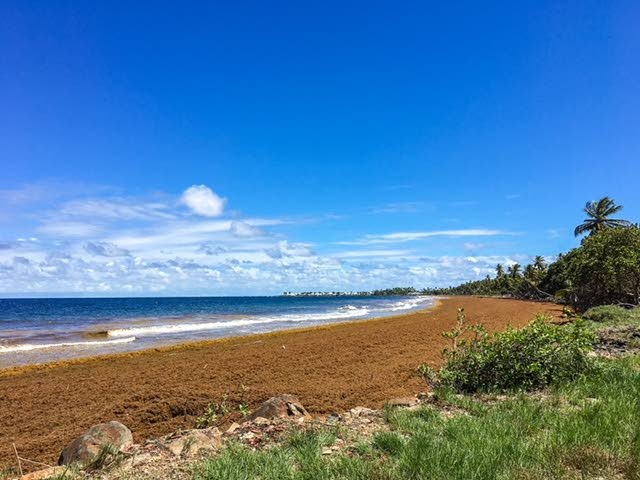
Little Rockly Bay
The lengthy windswept Atlantic shores of Little Rockly Bay in Lambeau may be ideal for an afternoon walk, but the beach becomes seasonally inundated with sargassum – something that is both a nuisance and a threat. Removal of sargassum may be a Sisyphean task, but presents opportunities for Caribbean innovation. From biofuel to fertiliser, paper products to pharmaceuticals, when will we begin to transform this coastal curse into a blessing?
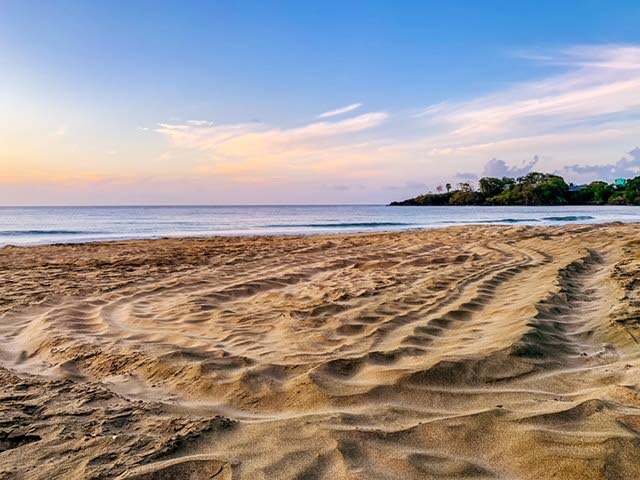
Stonehaven Bay
Leatherbacks make their annual nesting pilgrimage to our shores and the beach at Stonehaven is one of their nesting sites on Tobago. They are the only surviving member of a family of turtles with evolutionary roots over 100 million years old. Leatherbacks are ancient mariners, diving deeper and undertaking the longest ocean migrations of any sea turtle.
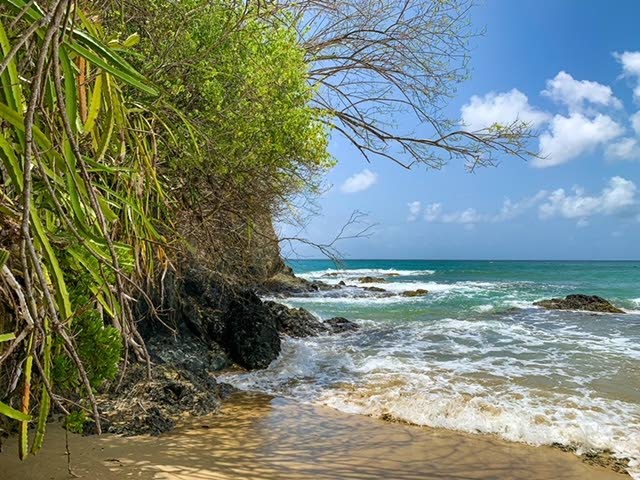
Belle Garden
Nestled on Tobago’s Atlantic coast between Pembroke and Roxborough is the scenic village of Belle Garden, known for its history and culture, Bele dance, and Tamboo Bamboo Band. The beaches and bays of Belle Garden were used as locations for Disney’s 1960 adventure movie Swiss Family Robinson.

King Peter’s Bay
A narrow and winding road descends from the steep hills of Moriah to King Peter’s Bay. It is a deserted, rugged dark sand beach which offers good snorkelling when the seas aren’t high. Views of King Peter’s Bay and the adjacent Celery Bay were also featured in the film Swiss Family Robinson.
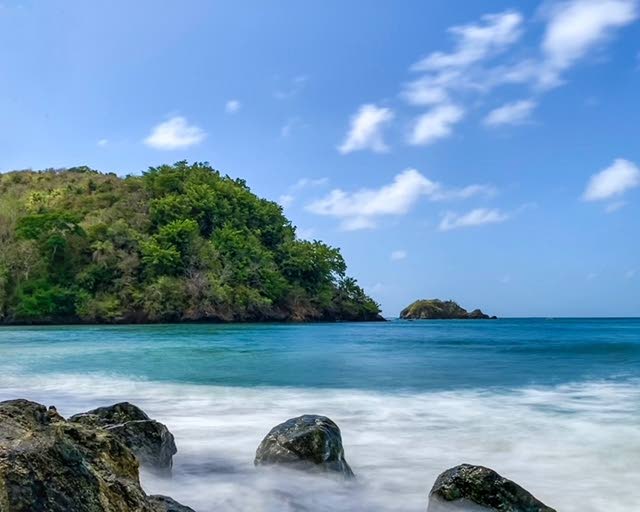
Queen’s Bay
There is easy access off the Windward Road at Louis d’Or to explore a dark sandy stretch of Queen’s Bay. A river feeds into the sea at the eastern end while a bluff is at the western end. Looking west, one appreciates how the Atlantic shapes the coastline. This is also a sea turtle nesting beach.
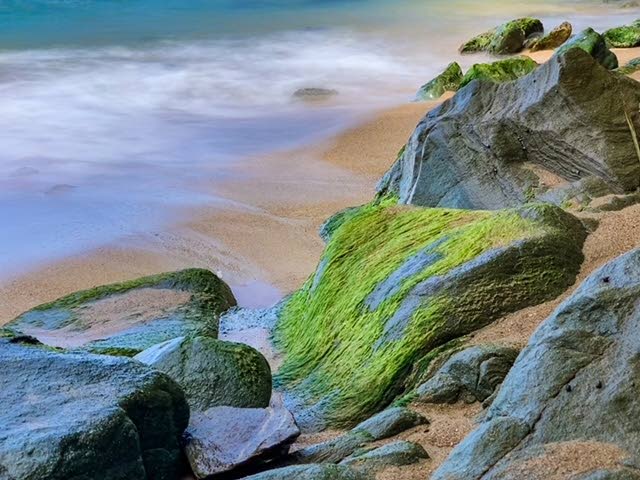
Englishman’s Bay
Englishman’s Bay is popular with beach-goers for its deserted-isle charm. A more intimate look at the rocks along the seashore reveals bright green algae. This is a building block of the food web, and a reminder of life in motion at the microscopic level.
Starwood Bay
Untouched and untamed on the upper Atlantic coast is Starwood Bay. It is a 200-metre stretch of sand that mostly disappears at high tide. The sea here is often rough with dangerous currents. Exploring the beach for seashell treasures is safer than risking a swim.
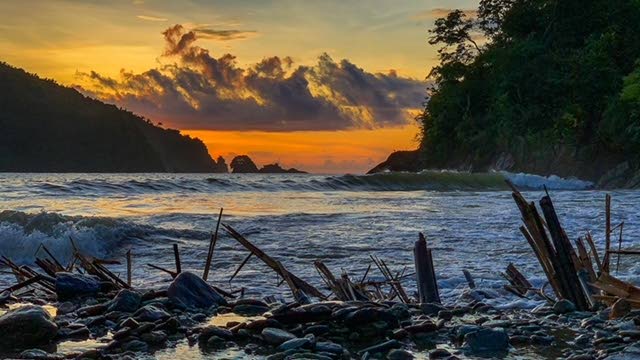
Bloody Bay
West-facing Bloody Bay offers breath-taking sunsets. The typically languid Caribbean beach transforms after heavy rains. The arterial Bloody Bay River nourishes the bay from the Main Ridge bringing silt and boulders and tree limbs. This flow of nutrients is the currency of nature.
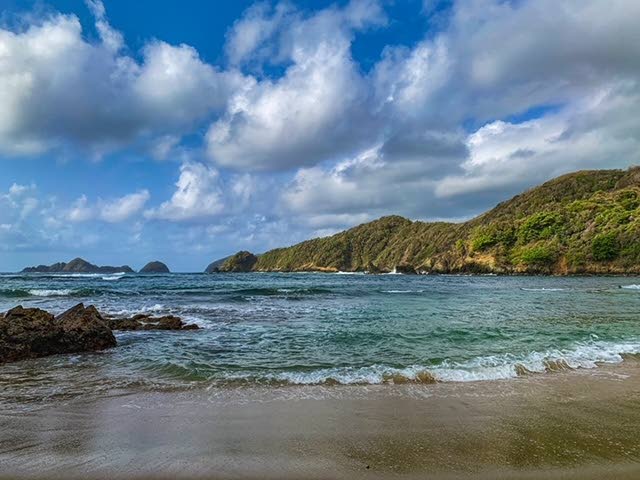
Tobago’s north coast
Accessible only by boat, Tobago’s northern tip is an endless dance of crashing waves against craggy cliffs. Crabs and trees cling to algae and barnacle laden rocks. Many of the birds here pursue fish beneath the rolling waves while some fish take to the air to escape predators from the deep. Life persists in this wild, undulating interplay between land and sea.


Comments
"12 coastal views from Tobago"